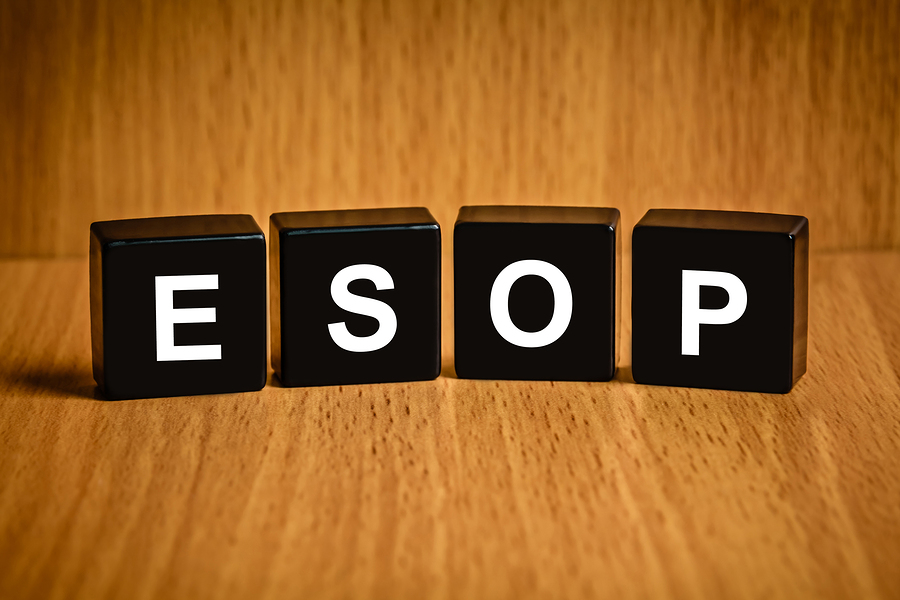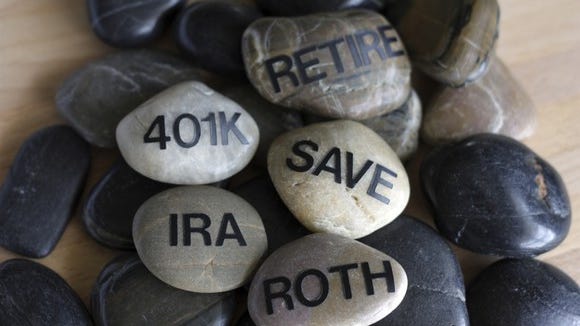The ESOP Roadmap
Building wealth with an ESOP

1. The beginning
It’s your first day at XYZ Consulting, Inc. which operates an ESOP. Some coworkers love the ESOP, others hate it. Human Resources might try to generate a huge buzz around it that not all may understand. It might seem like a gimmick, but just wait. IT WILL BUILD WEALTH. Each year you will get another small portion of company stock and each year the company stock price will change.
2. The Working Years
You might spend 5, 10, 20 or even 30 years with XYZ Consulting, Inc. Over the course of your career you have accumulated a large amount of shares and have generated a concentrated position of wealth. Your 55th birthday is coming up and you still want to know how to access your ESOP money. You are nearing retirement but what happens to the value of your ESOP shares? That value is going to get distributed or diversified to you one way or another. Each ESOP has slightly different timing mechanisms, but the next graphic and Step 3 are a good rule of thumb.



Distribution
Distribution always follows some sort of separation from the company. This could be quitting in your 40’s, terminating for cause before age 65, being laid off, or retirement at age 65 or later. The type of separation is hugely important. For simplicity purposes, let’s cover the basics. A separation before age 65, versus a separation after age 65.
Separation before Age 65
When you separate from a company before age 65, often times the ESOP will have some sort of waiting period before you are able to distribute your ESOP balance. This is typically a 5-6 year period before you are able to begin the distribution process. At that point it is likely that you will only be able to distribute about 20% of your ESOP balance each year over a 5 year period until the account is zeroed out.
Let’s see an example. Rachel is 45 years old and leaves XYZ Consulting, Inc. in December of 2020. She has 1,000 shares in her ESOP. It wont be until after December 31, 2025 (six plan year ends later) that she is eligible to start distributions. During the year 2026 Rachel will have the option to distribute 200 shares from her ESOP. If she elects the distribution, Rachel will be written a check for the value of the shares. Using a stock price of $75, Rachel will be paid $15,000 for her 200 shares. Rachel will then be locked in to sell an additional 200 shares per year until her account is zeroed out (total of 5 years). Rachel will have the option each year to take a direct payment (and pay taxes as income on the distribution) or utilize a rollover to another retirement plan (no taxes paid). Note that taking a direct payment before age 59.5 may result in a 10% penalty.
Separation after Age 65
Separating from the company after age 65 is considered a “Retirement” and this is great news for distribution eligibility. There will be little to no wait for distribution eligibility, and it is likely that you will be able to take a distribution in the year following your separation. You will likely still only be able to distributed 20% of your ESOP balance each year over a 5 year period, until the account is zeroed out but you will at least receive some right away!
Time for another example. Donald is 65 years old and leaves XYZ, Consulting, Inc. in December of 2020. Donald has 50,000 ESOP shares and has been with the company for over 20 years! Donald can elect to receive a distribution in 2021 and receive one fifth of his total share value via check payment, this means Donald can sell 10,000 shares at a value of $75,000 dollars. He is then locked in to sell an additional 10,000 shares per year for another 4 years until the account is zeroed out. Donald would receive over $375,000 in total for all of his ESOP payments. Each year he will also be faced with the choice to take a direct payment and pay taxes, or rollover the money into a qualified account and pay no taxes.
3. distribution versus diversification
There are two separate processes that remove assets from an ESOP and unfortunately they are named very similarly; distribution and diversification. Two completely separate processes that share a similar end result. One thing to consider here is that all ESOPs are designed with slight differences but do follow some basic rules.
Diversification
Let’s start with diversification. You become diversification eligible once you are 55 years old and have participated in the plan for at least 10 year. Both of these stipulations must be attained to become diversification eligible. Once these two requirements are met, it is likely that you are able to liquidate 25% of your total ESOP shares immediately. If you had 400 shares, you are able to sell 100 and get the cash value written to you as a check. In most plans, you will be able to get another 25%, but not until the 6th year of the diversification process. At that point you will be able to get another 100 shares cashed out and receive another check. At this point the diversification process is over and you would have maxed out your diversification possibilities.
Let’s see an example: Tom is age 55 and has 4,000 shares of XYZ Consulting, Inc. During this year Tom wants to receive a diversification payment for 25% of his total ESOP balance. Tom elects to sell 1,000 shares during the diversification window. Those 1,000 shares were worth $75,000 dollars and Tom decides to take his payment in the form of a rollover. Tom receives a check, and deposits it into his traditional IRA and uses the new money to purchase his 25 favorite public stocks. 5 more years of Tom working at XYZ consulting and he receives an additional 600 shares over the course of those years. In Tom’s second and final round of diversification he is eligible for an additional 1,300 shares (for a total of half of the shares he has ever been allocated). If the stock price remained the same over those years Tom would receive a second check for $97,500 that again he can choose to take directly and pay taxes on as if it were income, or utilize a rollover into a retirement account and pay no taxes. Tom has now finished the diversification process and was able to successfully sell 50% of his ESOP shares.


4. Tax consequences: Rollover versus Direct Payment

Direct Payment
Choosing a direct payment comes with tax consequences. The entire amount of your distribution will be considered income for the year in which the check is received. If you distributed $100,000 from your ESOP, this amount will be added to you current income for tax purposes. The risk is that you increase your tax bracket and pay a high marginal tax rate on your earned ESOP distribution. Depending on your age, you may be subject to a 10% excise penalty as well for an early distribution.

Rollover
If you choose to rollover your ESOP distribution or diversification payment to a traditional IRA or eligible 401(k) program you will not be subject to any immediate taxation or penalties. The rollover can now be put to use for future investment, while it maintains a tax protected status in a retirement account.